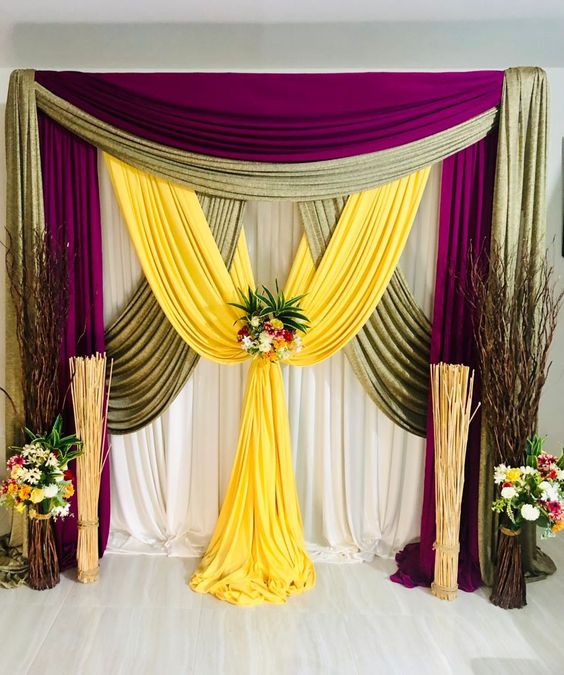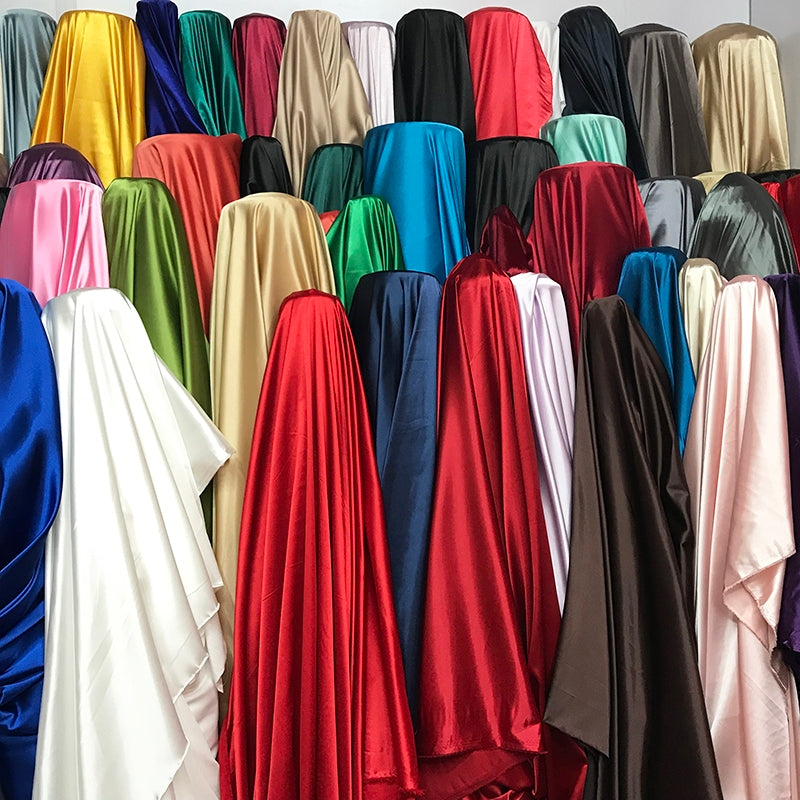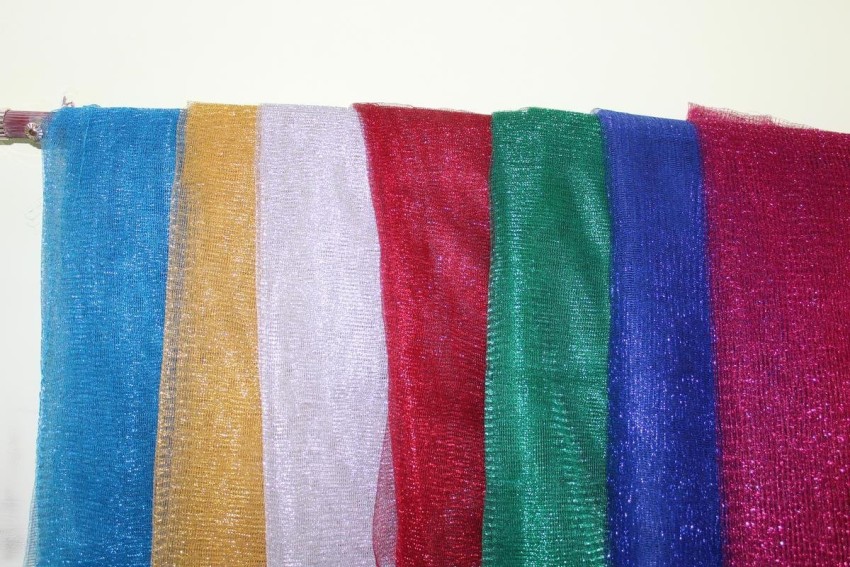Decorating your space can be a rewarding experience, and choosing the right fabric materials plays a significant role in achieving the desired aesthetic. Whether you’re revamping your living room, updating your curtains, or choosing upholstery for your furniture, understanding the different types of decoration fabric materials can make the process easier and more enjoyable. In this comprehensive guide, I’ll share my insights based on personal experience and research to help you make informed decisions.
Understanding Decoration Fabric Materials
Before diving into specific types of fabrics, let’s define what decoration fabric materials are. These are textiles used for decorating interiors, including curtains, upholstery, cushions, and various decorative items. The choice of fabric can influence the overall style and functionality of your space.
Why Choose the Right Fabric?
Choosing the appropriate fabric can enhance your home’s aesthetics and comfort level. Here’s what to consider:
- Durability: Some fabrics are more resistant to wear and tear, making them suitable for high-traffic areas.
- Maintenance: Consider how easy it is to clean and maintain the fabric.
- Comfort: Soft fabrics can enhance comfort, especially for upholstery.
- Style: Fabrics come in various patterns, colors, and textures that can complement your design scheme.

Types of Decoration Fabric Materials
Natural Fabrics

Natural fabrics are made from fibers sourced from plants or animals. They are known for their breathability and comfort.
Cotton
Cotton is a versatile natural fabric that is soft, breathable, and relatively easy to clean. It’s perfect for curtains, cushions, and upholstery.
- Pros: Soft, breathable, machine washable, affordable.
- Cons: Can wrinkle, may fade in sunlight.

Linen
Linen is another popular choice, known for its crisp texture and durability. Ideal for curtains and tablecloths, linen adds a sophisticated touch to any room.
- Pros: Highly breathable, strong, natural luster.
- Cons: Prone to wrinkling, more expensive than cotton.
Silk
Silk is luxurious and elegant, perfect for curtains and decorative pillows. It provides a beautiful sheen but requires special care.
- Pros: Luxurious, beautiful drape, natural temperature regulation.
- Cons: Expensive, requires dry cleaning, can be damaged easily.

Synthetic Fabrics
Synthetic fabrics are man-made and are often designed for specific purposes. They can mimic the qualities of natural fabrics but may lack some of their benefits.

Polyester
Polyester is a durable, affordable fabric commonly used in upholstery and curtains. It resists wrinkles and fading.
- Pros: Durable, stain-resistant, affordable.
- Cons: Less breathable than natural fibers.
Nylon
Nylon is another synthetic option known for its strength and moisture-wicking properties. It’s ideal for outdoor fabrics.
- Pros: Strong, water-resistant, lightweight.
- Cons: Can feel less comfortable than natural fabrics.

Blends and Mixtures
Many fabrics are now blends of natural and synthetic fibers, combining the best qualities of both. For instance, a cotton-polyester blend can offer breathability and durability.
Velvet
Velvet can be made from cotton, polyester, or silk. It’s luxurious and adds a touch of opulence to any decor.
- Pros: Rich texture, visually appealing, great for formal settings.
- Cons: Can be hard to clean, prone to crushing.
Choosing the Right Fabric for Your Project
Now that you’re familiar with the types of decoration fabric materials, how do you choose the right one for your specific project? Here are some factors to consider:
1. Purpose of the Fabric
Consider what you’ll be using the fabric for. Is it for curtains, upholstery, or decorative accents? Each use may demand different qualities in a fabric.
2. Color and Pattern
Choose colors and patterns that complement your existing decor. Consider the mood you want to create in the space.
3. Texture and Feel
The texture of the fabric can significantly affect the overall feel of the room. Soft textures can create a cozy atmosphere, while sleek fabrics may lend a modern touch.
Comparison Table of Decoration Fabric Materials
| Fabric Type | Durability | Maintenance | Comfort | Cost |
|---|---|---|---|---|
| Cotton | Medium | Easy | High | Low |
| Linen | High | Medium | High | Medium |
| Silk | Medium | Hard | High | High |
| Polyester | High | Easy | Medium | Low |
| Nylon | High | Easy | Medium | Medium |
Pros and Cons of Decoration Fabrics
Natural Fabrics
Pros:
- Breathability
- Comfort
- Eco-friendliness (in most cases)
Cons:
- Higher cost
- Maintenance may be challenging (especially silk)
Synthetic Fabrics
Pros:
- Durability
- Affordable
- Stain resistance
Cons:
- Less breathable
- Can feel less comfortable against the skin
Decorating with Fabric: Tips and Ideas
1. Layering Fabrics
Don’t be afraid to mix and match different fabrics to create depth and interest in your decor. Consider layering different textures, such as a soft cotton throw over a linen sofa.
2. Choosing Fabric for Curtains
When selecting fabric for curtains, consider the weight. Light and airy fabrics can create a breezy feel, while heavier fabrics can add a touch of luxury.
3. Upholstery Options
For upholstery, prioritize durability. Fabrics such as cotton blends or polyester can withstand daily wear and tear while remaining stylish.
4. Accessories and Accents
Small decorative items can transform a space. Think about using different fabrics for cushions, throws, and rugs to add color and texture.
FAQs About Decoration Fabric Materials
What is the best fabric for upholstery?
The best fabric for upholstery depends on your needs, but durable options like polyester blends or cotton can be great choices for furniture that gets frequent use.
How do I clean different types of fabric?
Cleaning methods vary by fabric. Always check the care label. Most cotton and polyester can be machine washed, while silk often requires dry cleaning.
Can I use natural fabric outdoors?
Using natural fabrics like cotton outdoors can expose them to premature wear. Synthetic fabrics like polyester or nylon are better choices for outdoor decor due to their durability and moisture resistance.
Are synthetic fabrics harmful?
Most synthetic fabrics are safe to use. However, they may not be as eco-friendly as natural fabrics. Look for recycled synthetics if sustainability is a concern for you.
Conclusion
Choosing decoration fabric materials is more than just a style choice; it’s about understanding how fabrics will perform in your home. By considering factors like durability, maintenance, and aesthetic appeal, you can select fabrics that not only enhance your decor but also fit your lifestyle. I hope this guide helps you feel more confident in your fabric choices, allowing you to create a space that reflects your personal style.